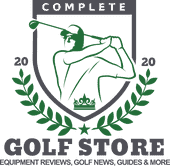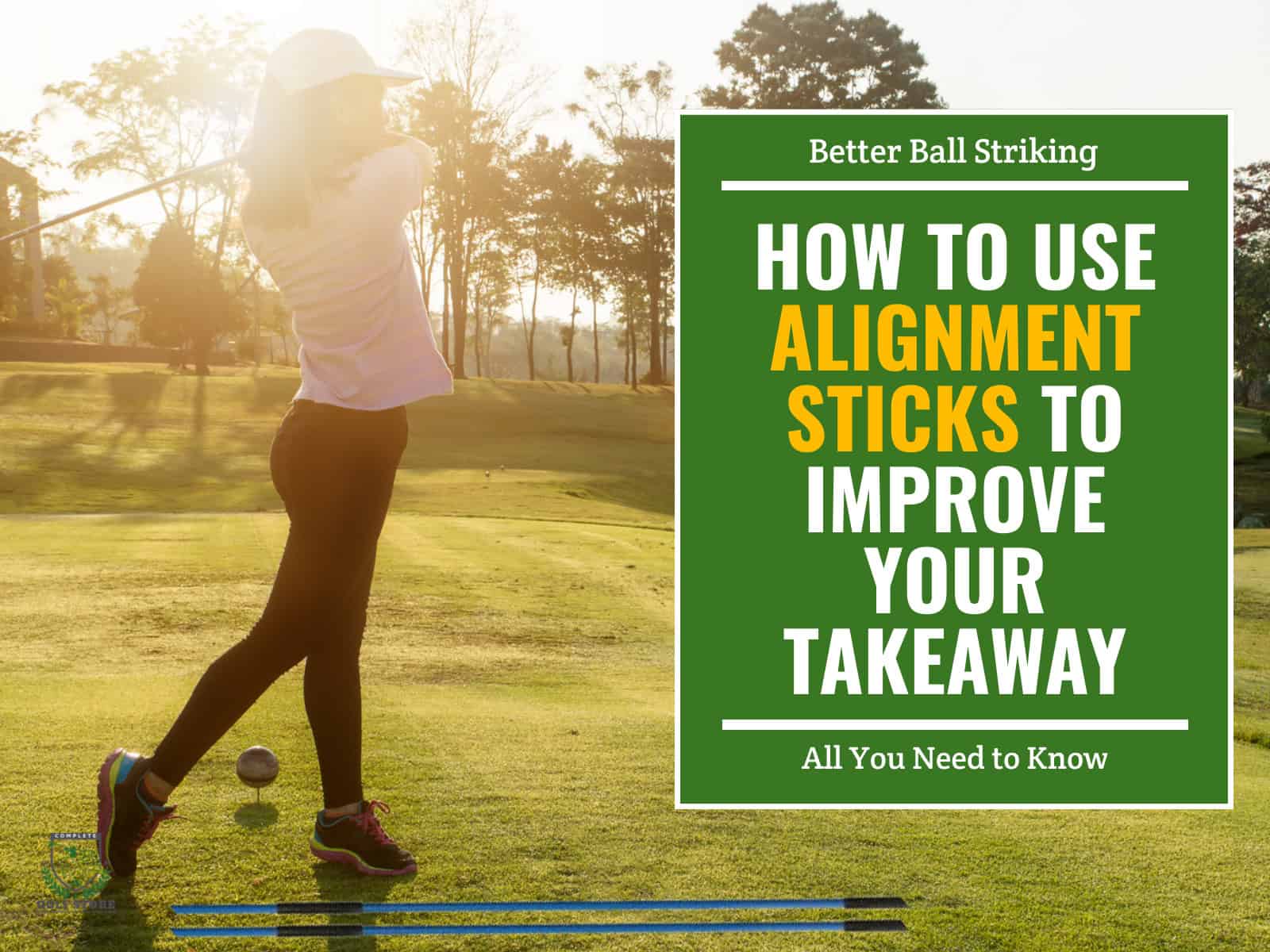When something as simple as a truly terrible shot happens to a novice golfer, it often signals the beginning of a sequence of events that progressively worsens over time. When something like that does occur, a round of golf may become an extremely frustrating experience.
Hooks are never enjoyable. A hooked shot will incur additional strokes, whether it is a rapid and low tee shot or one that sweeps across the green and into the bunker.
This article explains what happens during the golf swing to cause a hook, how to fix the problem if you routinely hit hooks, and what to do if you want to hit hooks.

What is a Hook?
A shot that begins to the right of the intended target, curves to the left while in flight and lands to the left of the intended target is known as a hook for a golfer who hits the ball with their right hand.
A hook is a final step on the path to a decent golf swing, and if you manage to fix it, you’ll be able to hit powerful shots that are consistent with your swing. You need to fix the way the ball flies before you can take the next step and become a scratch or near-scratch player.
Pull-hook
A pull hook occurs when the ball begins on the left and bends further to the left. It occurs when the club path is neutral or traveling to the left and the clubface is angled even farther to the left.

Push-hook
Advanced golfers frequently battle a push-hook, in which the ball begins its trajectory to the right and then abruptly turns to the left toward its end. The sole difference between an in-to-out swing path and a push-hook is that the clubface is closed upon contact.

What is a Snap Hook and Why is it Bad?
The snap hook is a dreaded golf mishit because it may go a considerable distance in the incorrect direction.
Snap hooks are so severe that they can begin to spin almost immediately after the ball has taken flight, and the curve offline can be significant. Snap hooks have an unsettling propensity to ricochet in trees or go into the water.
Snap hooks are sometimes referred to as duck hooks, shrimp hooks, snappers, and quackers. A snap-hook can happen on any hit, although it happens most frequently on tee shots. You should seek the advice of a professional if you find yourself hitting snap hooks.
Not only are snap hooks terrible to look at, but they also have a significant negative influence on your overall score. After making this shot, you will most likely not even be able to locate the ball. Even if you do find it, it is quite unlikely that it will be in a position that is advantageous to you. Consider yourself fortunate if you are able to leave the hole with a bogey.
The 6 Most Common Causes of Hitting Hook Shots & Suggested Solutions
If you have a tendency to strike hooks, you should first consider yourself fortunate. You’re close to hitting powerful, consistent shots after you overcome the hook issue. To become scratch or near-scratch, you must improve your ball flight.
Please note that a hook can be caused by one or more improper swing elements, from setup to ball position. We do have a detailed guide covering everything that can affect your golf swing in case you need a refresher on the basics.

1- Grip
Your golf grip can cause a hook shot when you adopt a “strong grip.”
A strong grip means that the golfer’s hands are rotated too far to the right on the club (for right-handed golfers). With this grip, the right hand may dominate the swing, causing the clubface to be closed at impact.
As a result, the ball starts right of the target and then hooks left uncontrollably. The closed clubface prevents the ball from straightening its flight and induces the hook spin.
To avoid this, you should adjust to a more neutral grip position. This involves placing the club more across the fingers of both hands and allowing the “V” formed by the thumb and index finger of each hand to point towards the center of the body. A neutral grip can help promote a more square clubface at impact, reducing the chances of hooking the ball.
2- Posture
Posture can cause a hook if you adopt a closed or overly tilted stance. If you set up with your shoulders and hips excessively closed or aimed to the left of the target (for right-handed golfers), it can influence the swing path and clubface position.
You should ensure you set up with a neutral stance, aligning your body parallel to the target line. The feet, hips, and shoulders should all be relatively square to the target. This setup allows for a more natural and consistent swing path, reducing the chances of producing a hook.
3- Alignment
When you set up with your body and clubface pointing too far to the right (for right-handed golfers) of the target, this alignment encourages an inside-to-outside swing path, where the clubhead approaches the ball from the inside and across the target line. You are more likely to hit a hook this way.
Make sure you align your body and clubface correctly. Setting up with a square or slightly open clubface and aligning the body (feet, knees, hips, shoulders, and forearms) parallel to the target line allows for a more neutral swing path and reduces the possibility of hitting hooks.
4- Swing Sequence

Hand and hip movement can cause a hook when there is an overactive or aggressive release of the hands through impact and an insufficient rotation of the hips. This combination of movements can lead to a closed clubface at impact and an inside-to-outside swing path (both major causes of the issue).
Focus on maintaining proper sequencing in your downswing. The hips should initiate the downswing, rotating towards the target, while the hands remain passive until the last moment before impact. This allows the clubface to stay square or slightly open at impact, reducing the chances of producing a hook.
5- Swing Path
A hook is produced when an inside-to-outside swing path is combined with a closed clubface at impact. This swing path promotes a counter-clockwise spin on the ball, and the closed clubface imparts additional leftward spin. As a result, the ball starts to the right of the target and then curves sharply to the left, ending up well left of the intended line.
When an inexperienced golfer sees the ball hooking to the left, their natural inclination may be to swing further to the right, which makes the problem much worse. This may be frustrating because it goes against everything their instincts tell them to do.
Instead, try to maintain a more neutral or slightly inside-out swing path. Additionally, focusing on proper weight transfer and shoulder rotation can help produce a more controlled and consistent swing path.
6- Release
The release can cause a hook when there is an excessive closing of the clubface through impact. This is often known as an “overactive release” or “flipping” of the hands. When you flip your hands aggressively through impact, it causes the clubface to close prematurely.
It is simple to close the face if you begin the downswing by moving your upper body. Try to Minimize excessive hand action and maintain proper hand and wrist positions at impact to help promote a square or slightly open clubface, reducing the chances of hooking the ball and leading to straighter shots.
3 Additional Ways to Fix Hooks in Golf
Here are three more ways, in addition to the ones mentioned in the section above, that can help you fix hook shots:
Please note that a proper grip (covered earlier) is of utmost importance if you want to avoid hooks.
1- Adopt A Wider Stance
To hit the ball further, golfers frequently commit the common fault of holding back on the downswing of the club. It may seem obvious, given that we are often told to hit the ball on the up with the driver, but doing so is likely to result in hooks since the body will stop moving and the hands will take control.
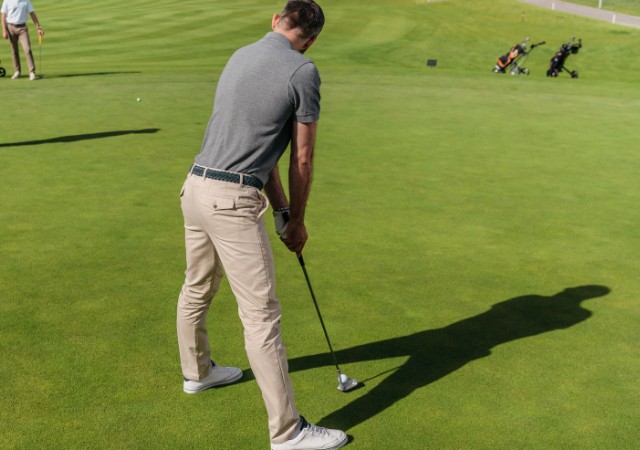
After you have the impression that your feet are somewhat wider at address – it’s only marginal, so don’t overdo it. Concentrate on moving your body through the shot while keeping that sensation in mind. When starting from the most elevated vantage point, the feeling of pushing off with your right foot might frequently be of assistance.
2- Practice Drills
Golf exercises are one of the most efficient strategies to maximize your practice time and develop genuine abilities that you can apply on the course.
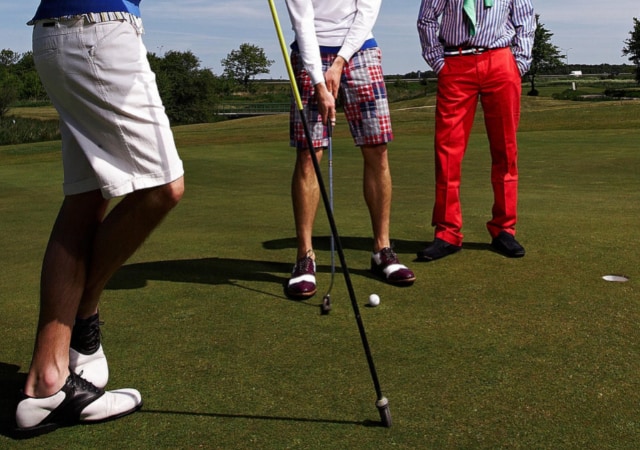
Good drills can also boost your confidence by allowing you to experience repeated success. Anyone who wants to progressively develop his or her game over time should have a list of practice drills to keep things moving correctly.
These are some of the drills you can practice:
Alignment Stick Path Drill
This initial exercise is my favorite. It could solve your problem in a couple of swings. You will need a snow pole or alignment stick that can be driven into the ground.
Place the pole in the ground approximately 5 to 8 yards in front of your ball position on the range so that it stands upright.
Then, return to your ball and aim for the pole. Make sure that you can see the pole in your peripheral vision. The objective is to strike the ball and club to the pole’s left (for right-handed players). This should create a slight fade around the pole and straighten your shot.
Left Hand Drill
Because there is far less room for error, consistently hooking the ball can sometimes be caused by releasing the club too early at the point of impact. This error is typically caused by a club approaching the ball from too far inside, needing active hands to align everything properly.
It is beneficial to take occasional swings using only your left hand to combat this. Initially, it will be difficult since you will be battling your natural tendencies. Still, practice will reduce the right hand’s dominance and offer you a more steady clubface throughout the hitting zone.
Weak Grip Drill
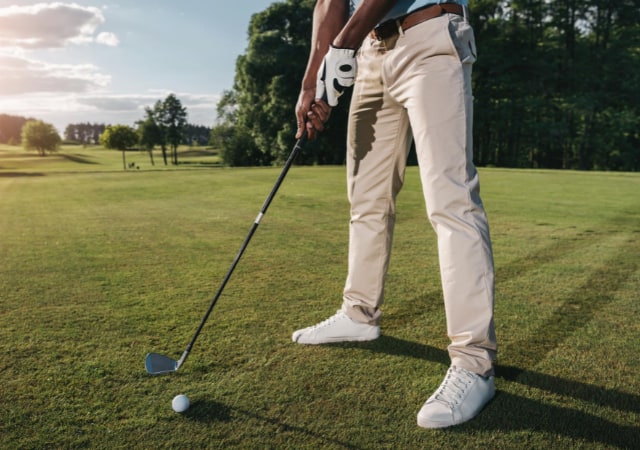
This drill’s sole purpose is to overcorrect your grip. This exercise assumes that your grip is overly strong, which is often the case if you’re having trouble with a snap hook.
Place your hands on the club with your thumbs pointing straight down the shaft. This will likely feel really awkward at first.
Then, do extremely gentle, full-swing shots.
The purpose of this drill is to experience how the ball travels when the grip is weakened. It is not intended to be a permanent hold. You will need a grip that falls between your current grip and this drill grip.
To further help you out, we suggest adopting our list of drills to Perfect Your Swing Tempo, which will help with your hooks, too.
3- Slow Down
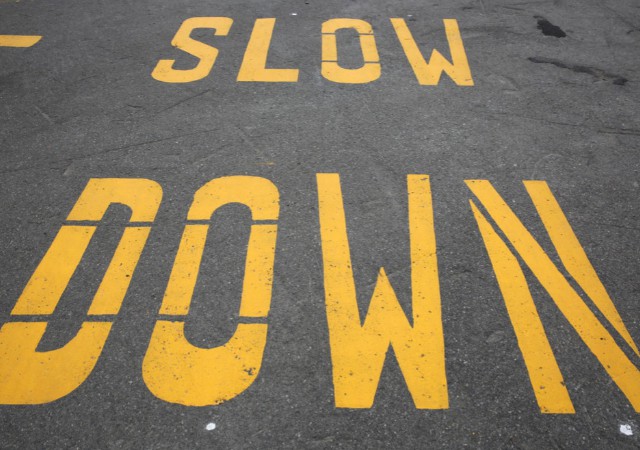
Why are you in such a rush? The ball is stationary. If you swing your driver too quickly and with too much force, you may cause damage to it. You do not need to make every shot with maximum force. Most of the time, 85% is sufficient.
Reduce the strain in your swing. Relax and swing with grace. Did this remove or diminish your hook? Reduce the speed of your swing and stop hitting snap hooks.
Another major reason why golfers hook the ball is that their hands and hips are too quick. Again, this can result in a closed clubface upon contact and the infamous right-to-left curve.
Practice backswings that are slower and more fluid. This should help you maintain a more consistent swing speed and may correct your hook.
Hook VS Slice
Those who have played golf for at least a few years have likely hooked and sliced the ball at some point. It can be among the most irritating moments in a game. Possibly, if you are new to golf, you consistently slice the ball and are weary of losing distance, so you play from the trees.
Many beginner golfers suffer from the slice, while advanced golfers frequently battle with the hook. Golf is far more enjoyable from the fairway when your swing produces the maximum distance possible. Hooks and cuts decrease your total distance and increase the game’s difficulty.
A slice happens when the ball leaves the clubface with left-to-right side spin if the golfer is right-handed and veers to the right, typically into the rough.
This is the most prevalent difficulty beginner golfers face since they tend to leave the clubface open at impact, resulting in a slice.
It is still possible to slice the ball with a closed clubface; however, the open face at contact is frequently the cause of slices among beginners.
Which one is better?
This is equivalent to questioning if it is preferable to hit your head or deal with a broken toe. Neither is very good. A hook typically results in a more aggressive ball flight. As individuals afflicted with a hook are well aware, the ball will frequently chase into difficulty as a result of its lower trajectory and increased speed.
On the other hand, since your distance and direction are both changed, a slice creates numerous bogeys. A second reason why the hook is regarded as a superior miss is that the player has typically released the club, but the timing was slightly off. The player’s clubface could also be slightly closed to produce the hook.
Whether you have a hook issue or are attempting to remedy a slice, you will need to spend time on the driving range. The results should be significant if you can make minor, incremental changes.
Final Thoughts
There is nothing wrong with being a draw player for most of your shots, but if you dive too far into this pattern, your draw will become a hook.
The key to fixing hooks is to understand what causes them. Once you’ve identified the problem, you’ll know how to correct it.
Establish a routine for each time you address the ball, checking off each item on your checklist to ensure that your grip and alignment are correct. Develop a pattern that you can follow.
We hope this guide helps you overcome the issue of consistent hooks; try to follow our tips and advice and be patient, as improvement in golf requires some time and effort.
If you have any questions, don’t hesitate to contact us.
Thanks for reading!
